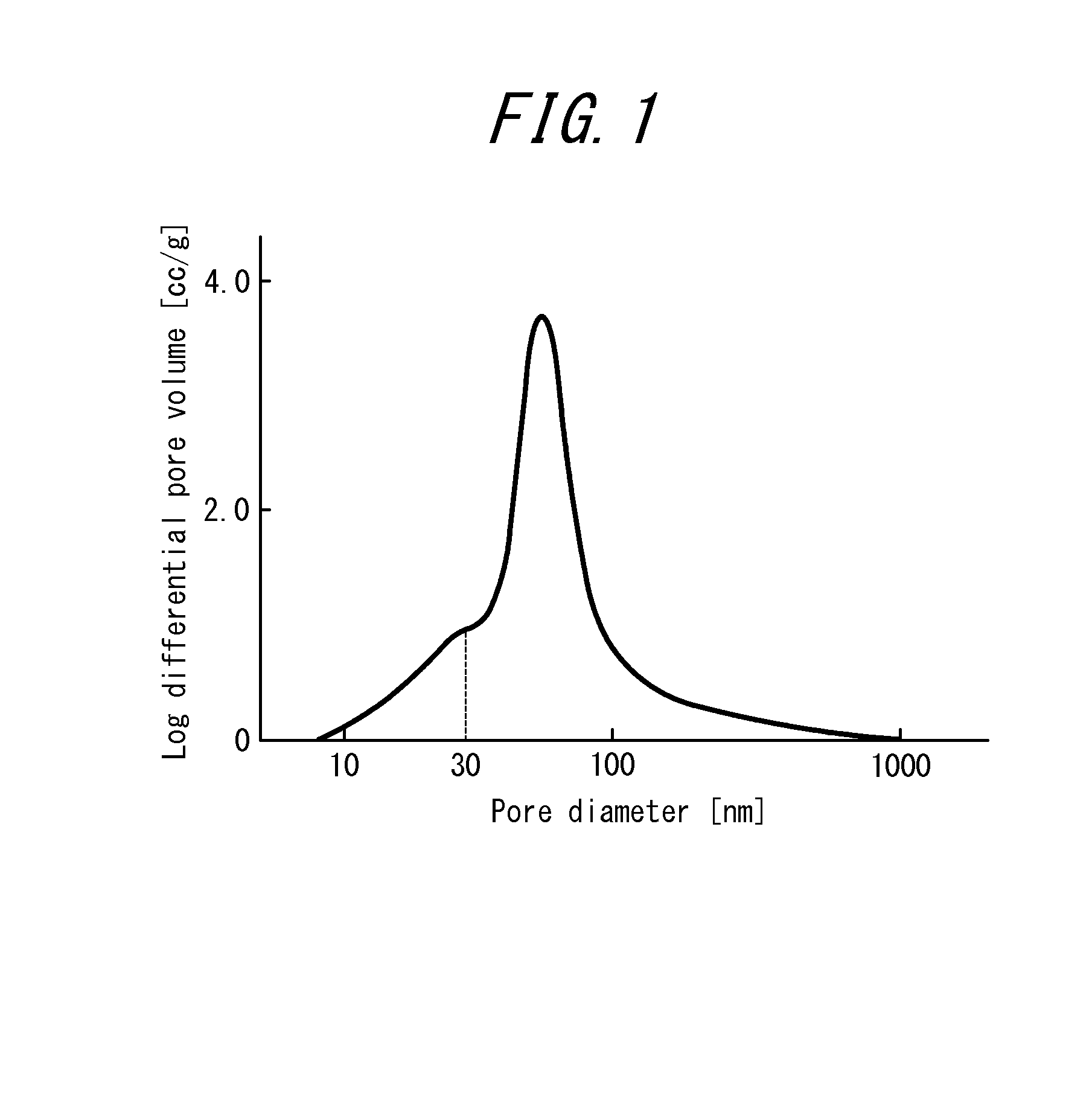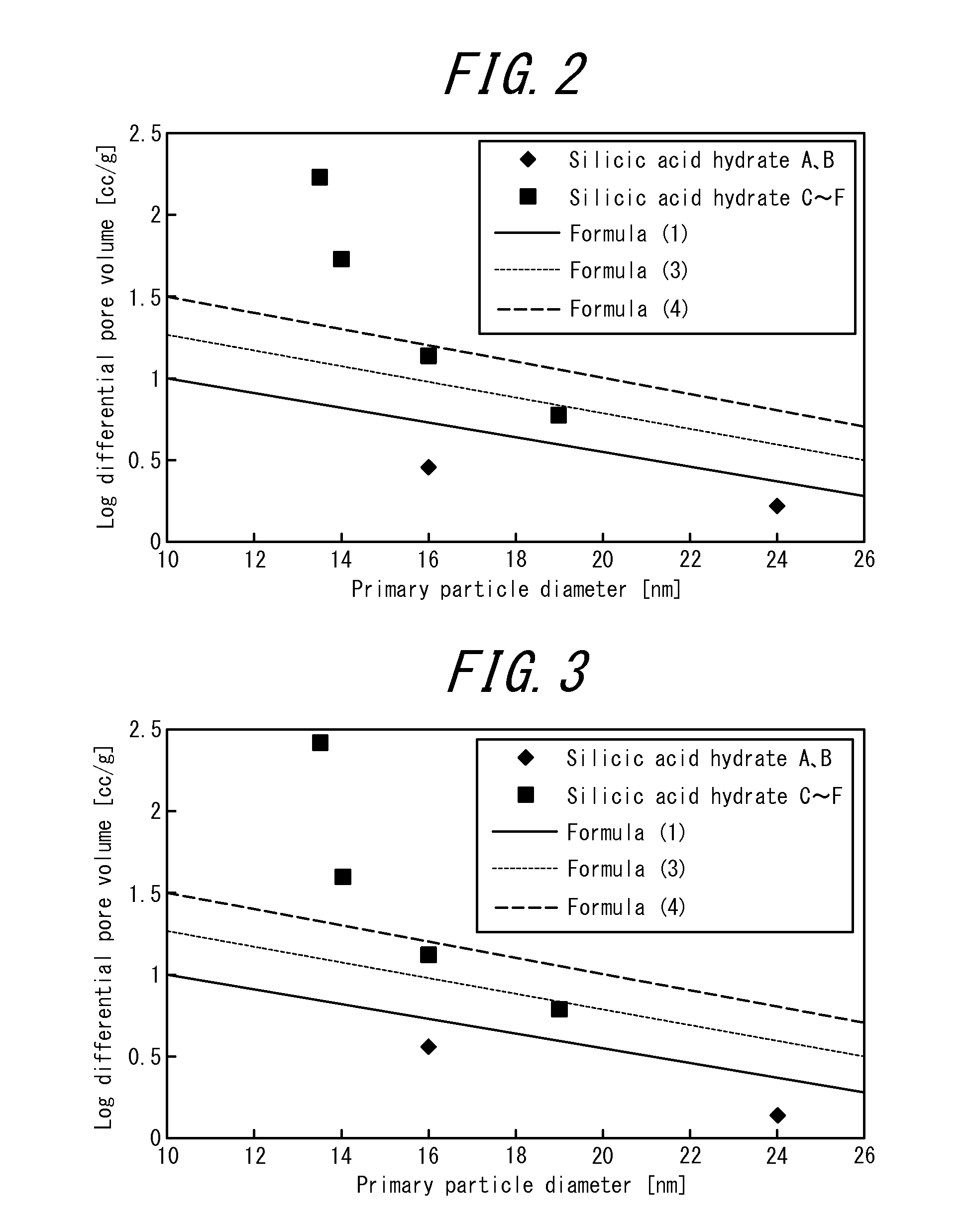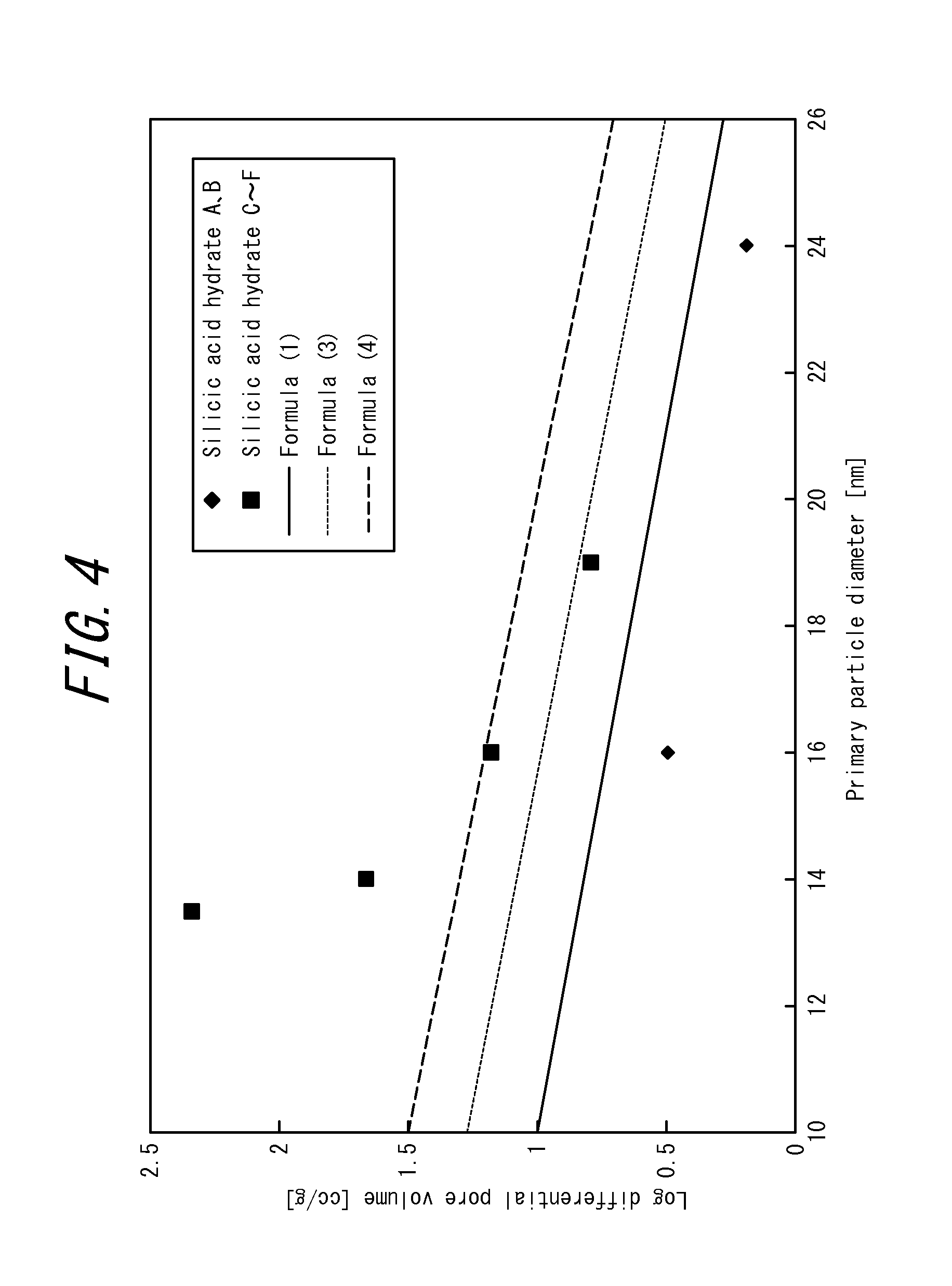Rubber composition, cross-linked rubber composition, and tire
- Summary
- Abstract
- Description
- Claims
- Application Information
AI Technical Summary
Benefits of technology
Problems solved by technology
Method used
Image
Examples
production example 1
Production of Hydrated Silica A
[0048]97 L of water and 1.8 L of an aqueous solution of sodium silicate (SiO2: 160 g / L, the mol ratio SiO2 / Na2O=3.3) were charged into a jacketed stainless reaction vessel (180 L) equipped with a stirrer and then heated to 70° C. Na2O concentration in a resulting reaction solution was 0.015 mol / L.
The same aqueous solution of sodium silicate as described above and sulfuric acid (18 mol / L) were simultaneously added dropwise to the reaction solution at flow rates of 370 mL / minute (the sodium silicate solution) and 16 mL / minute (sulfuric acid), respectively, with keeping the temperature of the reaction solution at 70° C. The neutralization reaction was carried out, while maintaining the Na2O concentration in the reaction solution within the range of 0.005 mol / L to 0.035 mol / L by adjusting the flow rates of the sodium silicate solution and sulfuric acid. The reaction solution changed its color to opaque white in the midst of the neutralization reaction and ...
production example 2
Production of Hydrated Silica B
[0049]65 L of water and 1.25 L of an aqueous solution of sodium silicate (SiO2: 160 g / L, the mol ratio SiO2 / Na2O=3.3) were charged into a jacketed stainless reaction vessel (180 L) equipped with a stirrer and then heated to 96° C. Na2O concentration in a resulting reaction solution was 0.015 mol / L.
The same aqueous solution of sodium silicate as described above and sulfuric acid (18 mol / L) were simultaneously added dropwise to the reaction solution at flow rates of 750 mL / minute (the sodium silicate solution) and 33 mL / minute (sulfuric acid), respectively, with keeping the temperature of the reaction solution at 96° C. The neutralization reaction was carried out, while maintaining the Na2O concentration in the reaction solution within the range of 0.005 mol / L to 0.035 mol / L by adjusting the flow rates of the sodium silicate solution and sulfuric acid. The reaction solution changed its color to opaque white in the midst of the neutralization reaction and...
production example 3
Production of Hydrated Silica C
[0050]89 L of water and 1.70 L of an aqueous solution of sodium silicate (SiO2: 160 g / L, the mol ratio SiO2 / Na2O=3.3) were charged into a jacketed stainless reaction vessel (180 L) equipped with a stirrer and then heated to 82° C. Na2O concentration in a resulting reaction solution was 0.015 mol / L.
The same aqueous solution of sodium silicate as described above and sulfuric acid (18 mol / L) were simultaneously added dropwise to the reaction solution at flow rates of 520 mL / minute (the sodium silicate solution) and 23 mL / minute (sulfuric acid), respectively, with keeping the temperature of the reaction solution at 82° C. The neutralization reaction was carried out, while maintaining the Na2O concentration in the reaction solution within the range of 0.005 mol / L to 0.035 mol / L by adjusting the flow rates of the sodium silicate solution and sulfuric acid. The reaction solution changed its color to opaque white in the midst of the neutralization reaction and...
PUM
| Property | Measurement | Unit |
|---|---|---|
| Pore size | aaaaa | aaaaa |
| Percent by mass | aaaaa | aaaaa |
| Percent by mass | aaaaa | aaaaa |
Abstract
Description
Claims
Application Information
 Login to View More
Login to View More - R&D
- Intellectual Property
- Life Sciences
- Materials
- Tech Scout
- Unparalleled Data Quality
- Higher Quality Content
- 60% Fewer Hallucinations
Browse by: Latest US Patents, China's latest patents, Technical Efficacy Thesaurus, Application Domain, Technology Topic, Popular Technical Reports.
© 2025 PatSnap. All rights reserved.Legal|Privacy policy|Modern Slavery Act Transparency Statement|Sitemap|About US| Contact US: help@patsnap.com



